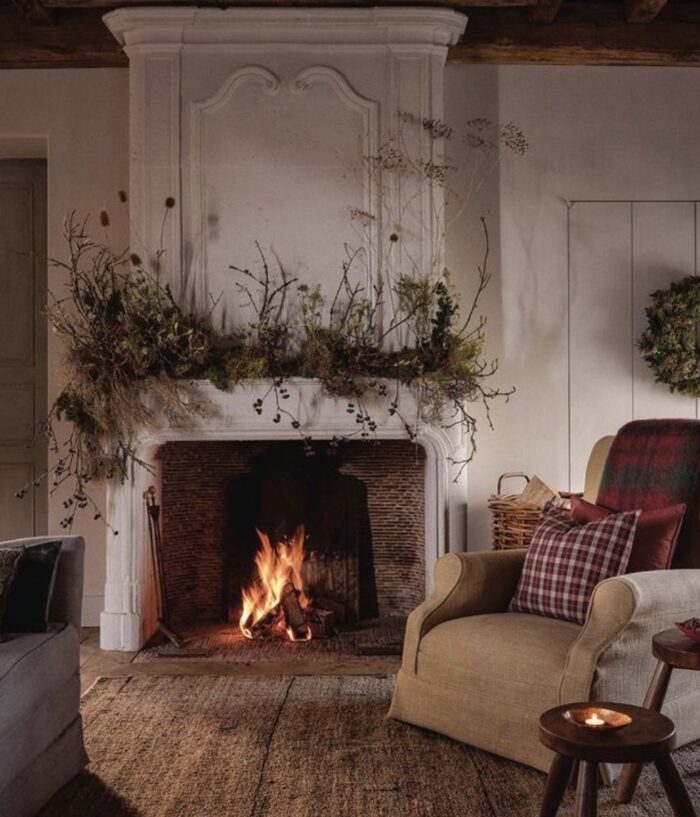From poorly scaled Christmas trees to a slavish devotion to green and red, here are the biggest mistakes designers see most often—and what to do instead. Read more, ‘Our Essential Guide To Celebrating This Season.’
In this historically strange holiday season, we’re counting on flowers and greenery’s historically documented ability to inspire cheer.
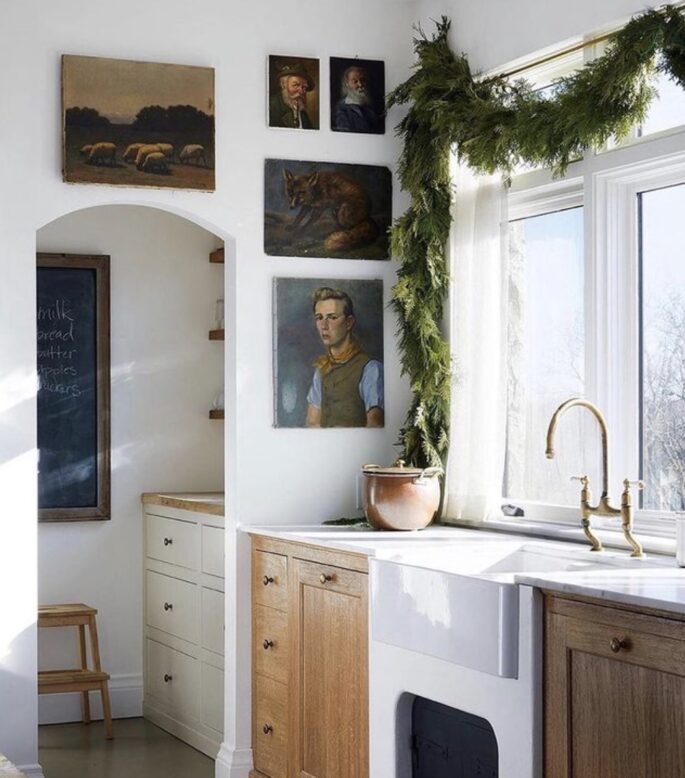
IN 2020, it’s especially important to spruce up, and create that holiday environment. Image via @amberlewisinteriros
In 2020, when we aren’t with loved ones, or with friends, it’s especially important to spruce up and create that holiday environment. Read more, ‘Time Tested Tips For A Stress-Free Christmas.’
That said, avoid the over-the-top approach.
The festive season often makes people lose their taste. They lose confidence around the home in their quest for everything to be perfect for the most festive day of the year. They try too hard, do things on a whim, and everything ends up looking terrible. Turns out adding a festive touch can be as simple as heading to your local market for simple berry branches or pomegranates in a bowl. Plus branches of spruce or fir mixed with Buxus, pinecones, and red apples.
Holiday decorating should accent and complement the rest of your interior and not overpower and compete with it. We recommend adding fresh greenery to every room this year but skipping ribbons and lights. Make your focal point: a larger-than-normal tree adorned with vintage ornaments. Read more, ‘Essential Christmas: A Last-Minute Checklist.’
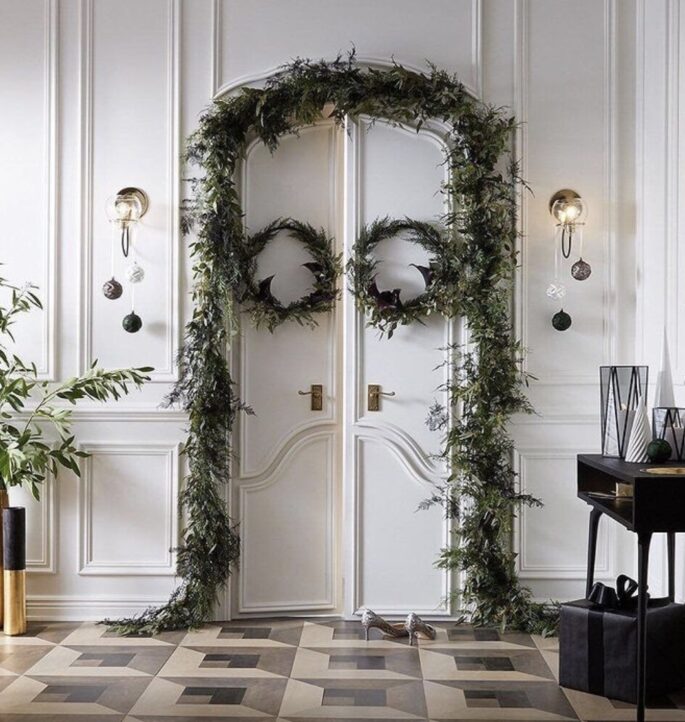
Scale greenery to give weight and cheer to your interior, but stick to good faux garlands or the real thing. Image via @cb2 instagram
A huge tree can ‘swallow up all the Christmas cheer in the room.’ Just as when buying furniture, measure first.
Reckless festooning is just one of the common Yuletide décor gaffes that make design pros cringe. Read more, ‘The Broke Person’s Guide to Getting Christmas Ready.’
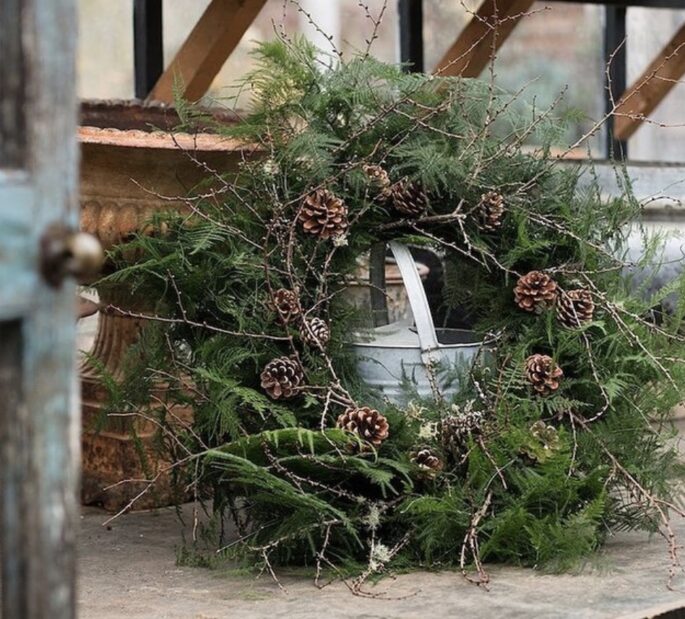
Increase texture by adding pine cones to your decorations. Image via @petershamnurseries
DO’S AND DON’TS
1. Knickknack Attack
Too many cute snowmen or faux reindeer get tacky fast. Instead, it’s alright to showcase the Nativity scene passed down from family. The key is to use figurines meaningfully. When it comes to treasured items, keep kitsch in check by layering them into a centrepiece and setting the table with modern glassware and vintage dinnerware, or patterned plates.We always think there is nothing more interesting than what you already own. Interweaving treasured objects and heirlooms into Christmas tablescapes is the recipe for a look that’s meaningful to you. Read more, ‘Get The Party Started; How To Be The Perfect Host.’
No Santa Claus, snowflake or holly motifs, please.
2. Ill-fitting Tannenbaums
You often see trees so gargantuan they swallow up all the Christmas cheer in the room, or tabletop varieties so dinky they provide a holiday atmosphere… for one. Instead, measure beforehand as you would when buying furniture. If you have high ceilings but can’t fit a wide berth, pick a slender tree so that it’s properly scaled for visual impact, the taller the better. Masse tabletop trees together for maximum impact – you don’t want them to look lonely. The rise of the rose ink decorations, provide a pleasing break from the traditional colours of red and green.
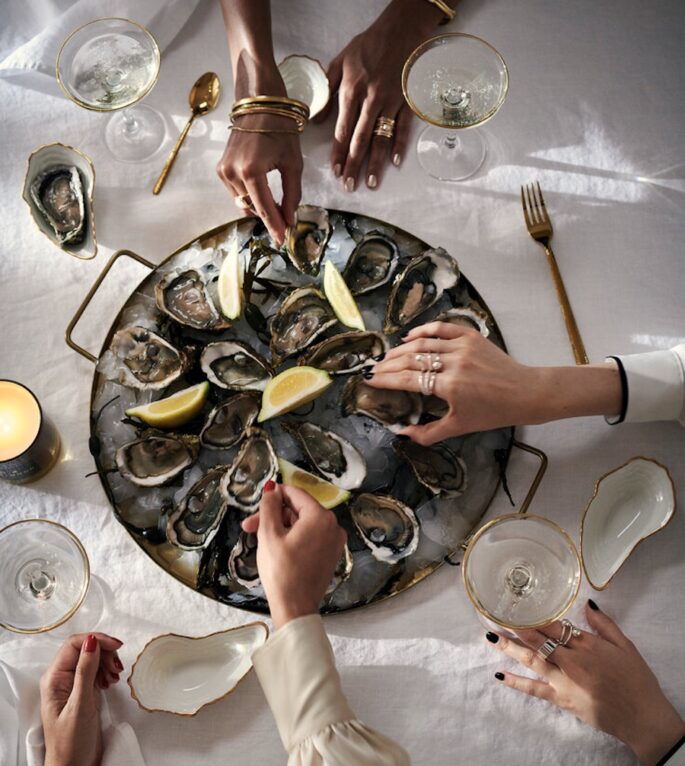
Tweak the traditional hues and go for white, gold and silver this year to avoid the shopping centre cliche of red and green. Image via GlenProebstel.com
3. Ugly Faux Greenery
There’s a lot of bad garlands on the market at a tempting price point. Avoid synthetic boughs with suspiciously dark green colouring and a telltale fake smell. Even worse, are pink or silver trees that try, and fail, to make a virtue of looking fake. Alternatively, attach live magnolia leaves or holly berries to artificial garlands to add interesting texture…fill in bald spots, and increase believability. Bring the outdoors indoors feels natural.
Instead, buy the real deal.
4. Overcompensating for Kids
Households with babies or destructive pets often leave bottom tree branches bare for safety. This looks like you’re half-doing the tree. Also, parents often think “plastic fantastic” decorations are the only safe option. Instead for that lower half, look for unexpected fabrications that are timeless, cosy, and festive. Try ribbons, wood ornaments, or shatterproof acrylic that looks just like mercury glass.
5. Focusing on too many things
Don’t think you have to decorate every surface in the house. If you want your decorations to look a million dollars, all you have to do is focus your energy on your mantel and your tree. They are the main things people notice. You don’t need loads of expensive, elaborate baubles, just lots of them for a luxury look; and stick to two or three hues.
6. Ye Olde Green, Red, and Gold
Pledging allegiance to the classic colour scheme can make your home look like it’s about to play host to a shopping centre Santa or serve as the set for a crazy-making Hallmark Christmas movie. Avoid Christmas cliche schemes that clash. Beware of anything that jars with your usual interior décor, and don’t use green and gold, or blue and silver: they’re shopping centre cliches. Silver and gold metallics, or taupe and green is more chic. Or try gold and a soft pink. Set up just two or three vignettes around meaningful pieces. Instead, lean on simple greenery to evoke a dreamy Scandinavian forest. Alternatively, tweak the traditional hues and rely on pink and pale green. Nestle pine cones among the greenery for sure-fire chic.
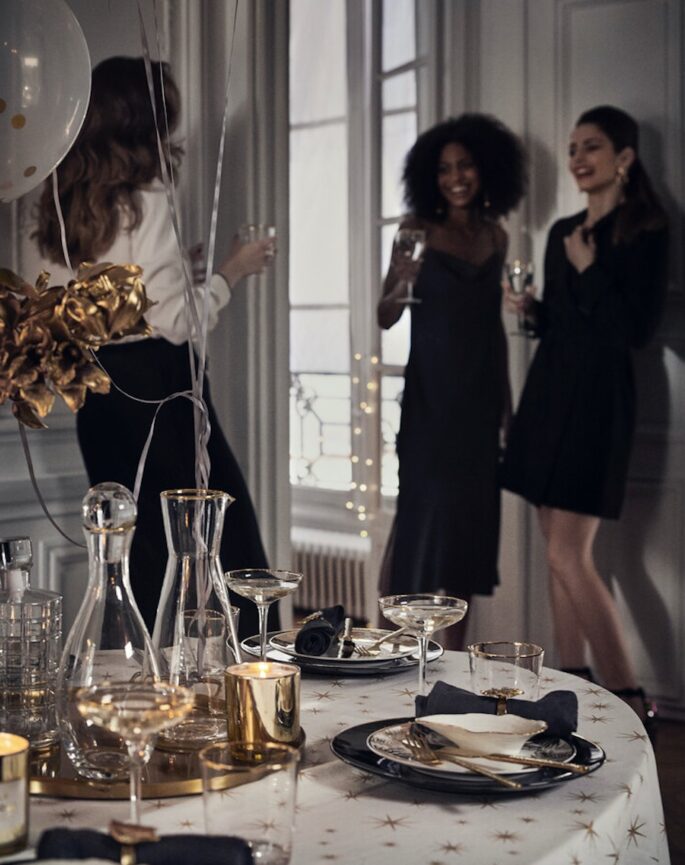
Image via GlenProebstel.com

